Sarah L. Johnson's Blog, page 26
April 12, 2022
Four Treasures of the Sky by Jenny Tinghui Zhang revisits the American West from a compelling new viewpoint
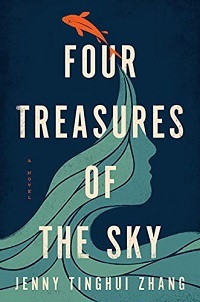 How do you restore agency over your life when you have few choices and you’re forced to hide your identity to survive? Such is the central question within Four Treasures of the Sky, an enlightening and haunting coming-of-age tale about a Chinese teenager trying to outpace what she believes is a tragic destiny.
How do you restore agency over your life when you have few choices and you’re forced to hide your identity to survive? Such is the central question within Four Treasures of the Sky, an enlightening and haunting coming-of-age tale about a Chinese teenager trying to outpace what she believes is a tragic destiny. Lin Daiyu has always hated her name, taken from a legendary heroine who sadly died young after a romantic betrayal. Even so, she enjoys an idyllic childhood with her loving parents and grandmother in a coastal fishing village. Her world changes in an instant after her mother and father, talented tapestry-makers, suddenly vanish. For Daiyu’s safety, her grandmother sends her off alone, disguised as a boy, to the city of Zhifu, where she’s taken in by a master calligrapher and surreptitiously picks up his skills. The lessons that calligraphy teaches her remain throughout her life.
Once again, her time of peace and learning isn’t to last. While visiting a fish market in 1882, at age thirteen, she’s kidnapped, forced to learn English (for greater appeal to her future white customers), and shipped inside a coal bucket to San Francisco, where she’s sold into a prosperous brothel run by the ambitious Madam Lee and renamed “Peony.” Her adventures, such as they are, don’t end there.
With her outer persona – her name, clothing, gender – repeatedly changed, Daiyu must conceal her true self, with the ghost of the long-dead Lin Daiyu echoing in her head yet unable to help her. The way Zhang portrays Daiyu’s interior life is breathtakingly complex and works well in keeping with the trials she endures. Daiyu speaks in first-person present tense, without quotation marks for dialogue, which causes only rare confusion between her narrative and others’ speech.
In an era where almost everyone seeks to crush her humanity – we see many examples of bigotry, and of how Chinese girls are considered disposable – Daiyu’s voice sings out clearly. In her author’s note, Zhang writes of her purpose in bringing the history of systemic discrimination and violence against the Chinese into the popular consciousness, especially with the rising number of hate crimes against Asians in the U.S. today. Historical fiction is an ideal vehicle for revealing little-known stories such as this, and Daiyu’s personal story – which she fiercely owns at last – is one people need to hear.
Four Treasures of the Sky was published by Flatiron/Macmillan this month; I read it from an Edelweiss e-copy.
Published on April 12, 2022 05:00
April 7, 2022
The Italian Girl's Secret by Natalie Meg Evans draws readers into wartime Naples
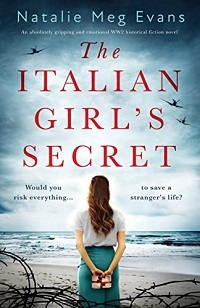 This story offers an intensely powerful view of wartime Naples and surrounding towns from an Italian woman’s perspective. By 1943, it has been four years since Carmela del Bosco returned from England, where she attended school and experienced terrible loss. She now lives in a farmhouse with her Nonna in the hills outside Naples, growing tomatoes and raising animals, while the occupying Germans roam the countryside, rooting out dissent.
This story offers an intensely powerful view of wartime Naples and surrounding towns from an Italian woman’s perspective. By 1943, it has been four years since Carmela del Bosco returned from England, where she attended school and experienced terrible loss. She now lives in a farmhouse with her Nonna in the hills outside Naples, growing tomatoes and raising animals, while the occupying Germans roam the countryside, rooting out dissent. When her half-brother Danielo, a resistance fighter, asks her to conceal a wounded soldier, Sebastiano, she resists bringing the stranger into her home, fearing her Fascist second cousins’ wrath. Instead, she reluctantly agrees to harbor Sebastiano nearby within an abandoned vedetta, a stone watchtower. His wits confused by morphine, the man speaks in English to Carmela and reveals his mission to find a wireless operator to communicate crucial information to the Allies. From that point on, every action Carmela takes draws her into danger.
Despite the publisher’s blurb (which is partly inaccurate), this story is not primarily a romance but a tale of a woman’s and family’s struggle for survival when there are no safe places—not even a beloved home—and split-second decisions have major repercussions. Knowing who to trust is paramount, and while Carmela may seem annoyingly naïve in letting some secrets slip, her flawed nature makes her seem more real in the end.
The family interactions are riveting. Carmela’s father, Don Gonzago, is a minor nobleman with a messy romantic history, and his palazzo, with its underground vaults, is the scene for many vivid moments. Carmela’s beloved dog, Renzo, is part of her family, too, and her concern for his welfare is heartwarming. In a taut, action-filled style, Evans exposes the unsentimental brutality of wartime and digs deep in revealing her characters’ emotions as Carmela faces her past and makes choices that affect her future.
The Italian Girl's Secret was published by Bookouture in 2021; I'd reviewed it from NetGalley for the Historical Novels Review.
Published on April 07, 2022 10:34
March 30, 2022
Toto Koopman—Model and Spy, a guest post from historical novelist Maryka Biaggio
I'm extending a welcome today to Maryka Biaggio, who has an essay about a WWII heroine, Toto Koopman, you likely won't have heard of, as she explains below. She also provides insight into why Toto's life story is well worth knowing. Maryka's novel The Model Spy was published yesterday (find it on Amazon and Goodreads).
~
Toto Koopman—Model and SpyMaryka Biaggio
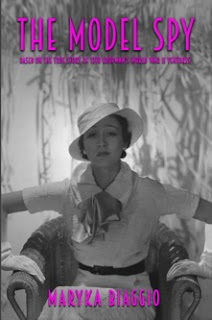 Some years ago, I came across a biography of Toto Koopman, a woman largely unknown today. The Many Lives of Miss K by Jean-Noël Liaut was originally published in France. It’s a slight biography, covering all of Toto Koopman’s life in 230-some pages, and opens with this:
Some years ago, I came across a biography of Toto Koopman, a woman largely unknown today. The Many Lives of Miss K by Jean-Noël Liaut was originally published in France. It’s a slight biography, covering all of Toto Koopman’s life in 230-some pages, and opens with this:
‘It’s Mademoiselle! I never wanted to marry,’ countered Catharina ‘Toto’ Koopman to anyone who dared to address her as Madame. It was the same answer she gave throughout her life, a long life of adventure, peril, conflict and intrigue; a life where petty rancor and timid imagination had no place and simplistic dualism had no voice—the extraordinary journey of a beguiling woman.
I was hooked. Thus began my quest to fashion a novel about Toto’s World War II ventures.
Toto was arguably the first woman to spy for the British Intelligence Service. Her life is not well documented, and she left no letters or diaries. That presented challenges and opportunities for me as a writer. I wanted, as much as possible, to accurately portray her experiences during the war, but I had little to go on. I spent over five years chasing down the clues nested in her biography and immersing myself in fiction and nonfiction about Italy’s fractured politics, Mussolini’s reign, the economic state of Italy leading up to and through the war, Mussolini’s son-in-law and Foreign Minister Galeazzo Ciano, female spies, and Allied strategies in the European theater.
Toto Koopman was born in Indonesia to a Dutch father and Indonesian mother. Educated in Holland and London, she had it all—beauty, brains, and fame. She took up the life of a bon vivant in 1920s Paris and modeled for Vogue magazine and Coco Chanel. Fluent in six languages, she was adventurous and daring. Still, I wondered, why did she walk away from a successful modeling career—and the prospect of an even more successful career in the nascent but burgeoning film industry of the 1930s? I had to answer this question if I was going to accurately portray her immersion in the world of espionage.
In the mid-1930s, Toto left Paris for London, where she attracted the attention of Lord Beaverbrook, the William Randolph Hearst of England. She soon became his confidante, companion and translator, traversing Europe and finding herself caught in the winds of impending war. Beaverbrook introduced her to influential people, including a director at the British Intelligence Service, who schooled her in espionage.
On the eve of World War II, Toto gave up her exciting and comfortable life in London and moved to Florence. There she joined the Italian resistance and began sending intelligence to London. This was not without significant risks—she was a public figure, photographed by some of Europe’s most famous photographers, and featured in social columns in London, Paris, and Berlin newspapers. Biracial, elegant, and vivacious, she could not simply melt into anonymity.
Toto Koopman obviously held strong beliefs about the war effort. I believe that her childhood experiences with prejudice and her tutelage in world politics under Beaverbrook ignited a fervent interest in the hate-mongering and authoritarian movements sweeping the Continent at that time. This I considered the key to her decision to spy. But that didn’t mean she would have an easy time of it. As she bravely took up the role of spy, Mussolini’s Blackshirts and the Nazi’s military intelligence pursued her. Operating in the hotbed of Mussolini's Italy, she courted danger every step of the way. And as the war entered its final stages, she faced off against the most brutal of forces—the Abwehr, Germany's Intelligence Service. It was not easy to write about her harrowing experiences, but it was worth the effort. Toto was one of the many brave souls who fought the good fight and sacrificed much to see the Allies through the darkness of that terrible war.
~
Maryka Biaggio, Ph.D., is a psychology professor turned novelist who specializes in historical fiction based on real people. Her most recent novel, The Model Spy, is based on the true story of Toto Koopman, who spied for the Allies and Italian Resistance during World War II. Her website is www.MarykaBiaggio.com, and for more information on the novel, please check out the book trailer.
~
Toto Koopman—Model and SpyMaryka Biaggio
 Some years ago, I came across a biography of Toto Koopman, a woman largely unknown today. The Many Lives of Miss K by Jean-Noël Liaut was originally published in France. It’s a slight biography, covering all of Toto Koopman’s life in 230-some pages, and opens with this:
Some years ago, I came across a biography of Toto Koopman, a woman largely unknown today. The Many Lives of Miss K by Jean-Noël Liaut was originally published in France. It’s a slight biography, covering all of Toto Koopman’s life in 230-some pages, and opens with this: ‘It’s Mademoiselle! I never wanted to marry,’ countered Catharina ‘Toto’ Koopman to anyone who dared to address her as Madame. It was the same answer she gave throughout her life, a long life of adventure, peril, conflict and intrigue; a life where petty rancor and timid imagination had no place and simplistic dualism had no voice—the extraordinary journey of a beguiling woman.
I was hooked. Thus began my quest to fashion a novel about Toto’s World War II ventures.
Toto was arguably the first woman to spy for the British Intelligence Service. Her life is not well documented, and she left no letters or diaries. That presented challenges and opportunities for me as a writer. I wanted, as much as possible, to accurately portray her experiences during the war, but I had little to go on. I spent over five years chasing down the clues nested in her biography and immersing myself in fiction and nonfiction about Italy’s fractured politics, Mussolini’s reign, the economic state of Italy leading up to and through the war, Mussolini’s son-in-law and Foreign Minister Galeazzo Ciano, female spies, and Allied strategies in the European theater.
Toto Koopman was born in Indonesia to a Dutch father and Indonesian mother. Educated in Holland and London, she had it all—beauty, brains, and fame. She took up the life of a bon vivant in 1920s Paris and modeled for Vogue magazine and Coco Chanel. Fluent in six languages, she was adventurous and daring. Still, I wondered, why did she walk away from a successful modeling career—and the prospect of an even more successful career in the nascent but burgeoning film industry of the 1930s? I had to answer this question if I was going to accurately portray her immersion in the world of espionage.
In the mid-1930s, Toto left Paris for London, where she attracted the attention of Lord Beaverbrook, the William Randolph Hearst of England. She soon became his confidante, companion and translator, traversing Europe and finding herself caught in the winds of impending war. Beaverbrook introduced her to influential people, including a director at the British Intelligence Service, who schooled her in espionage.
On the eve of World War II, Toto gave up her exciting and comfortable life in London and moved to Florence. There she joined the Italian resistance and began sending intelligence to London. This was not without significant risks—she was a public figure, photographed by some of Europe’s most famous photographers, and featured in social columns in London, Paris, and Berlin newspapers. Biracial, elegant, and vivacious, she could not simply melt into anonymity.
Toto Koopman obviously held strong beliefs about the war effort. I believe that her childhood experiences with prejudice and her tutelage in world politics under Beaverbrook ignited a fervent interest in the hate-mongering and authoritarian movements sweeping the Continent at that time. This I considered the key to her decision to spy. But that didn’t mean she would have an easy time of it. As she bravely took up the role of spy, Mussolini’s Blackshirts and the Nazi’s military intelligence pursued her. Operating in the hotbed of Mussolini's Italy, she courted danger every step of the way. And as the war entered its final stages, she faced off against the most brutal of forces—the Abwehr, Germany's Intelligence Service. It was not easy to write about her harrowing experiences, but it was worth the effort. Toto was one of the many brave souls who fought the good fight and sacrificed much to see the Allies through the darkness of that terrible war.
~
Maryka Biaggio, Ph.D., is a psychology professor turned novelist who specializes in historical fiction based on real people. Her most recent novel, The Model Spy, is based on the true story of Toto Koopman, who spied for the Allies and Italian Resistance during World War II. Her website is www.MarykaBiaggio.com, and for more information on the novel, please check out the book trailer.
Published on March 30, 2022 05:00
March 29, 2022
The Diamond Eye by Kate Quinn, her thrilling novel about a real-life WWII heroine
 Quinn (The Rose Code, 2021) incorporates the life of Lyudmila Pavlichenko, history’s most successful female sniper, into this thrilling novel.
Quinn (The Rose Code, 2021) incorporates the life of Lyudmila Pavlichenko, history’s most successful female sniper, into this thrilling novel. In 1941, after the Nazis invade her Soviet homeland, Mila, a library researcher and single mother with an arrogant, estranged husband, leaves her family and university studies to join the Red Army, intent on utilizing her marksmanship training.
The on-the-ground action is propulsive as Mila forms bonds with other soldiers while battling sexism and waiting patiently in trenches for her targets to appear. Quinn alternates these immersively realistic scenes with a narrative set in 1942, as danger stalks Mila and President Roosevelt during her overseas goodwill tour to persuade America to open a second front in Europe.
From the killer opening line to the suspenseful denouement, Quinn’s novel is a winner. Set aside any preconceptions about a sniper’s typical personality. Mila is a brave, witty woman of steely resolve—“don’t miss” is her modus operandi—who falls passionately in love, totes her history dissertation around on missions, and collects leaf samples to mail home to her son. Her unusual friendship with Eleanor Roosevelt is another highlight.
Novels about WWII heroines are having a moment, and this is a stellar example. Recommend it to fans of Ariel Lawhon’s Code Name Hélène (2020) and all lovers of smart historical fiction.
The Diamond Eye is published today by William Morrow; I wrote this starred review for Booklist's Feb. 15th issue. As mentioned in my previous post about novels focused on Ukraine and Ukrainians, Lyudmila Pavlichenko was born in what's now Ukraine and is a fierce defender of her homeland against the Nazi invaders. If you know little to nothing about her life before reading this novel (as I did), I advise avoiding Wikipedia or other biographical articles; there be spoilers!
Published on March 29, 2022 07:18
March 22, 2022
Twelve historical novels featuring Ukraine and Ukrainians
Like countless others, I've been horrified by the war in Ukraine and the suffering among the people there. My interest in the country's history is also personal since my maternal ancestors originated from places now part of Ukraine: specifically Bolekhiv (Bolechow), Kolomyia, and Kyiv. They all left in the early 20th century and settled in New York and Philadelphia. The circumstances are very different, of course, but events of the last month have had me reflecting on their decisions to flee their homelands to escape life-threatening oppression.
Country borders have changed significantly over the last century and a half, which has made research a challenge. At different times, the lands from which they hailed were part of the Austro-Hungarian Empire, Poland, or the Russian Empire. It was interesting to come across my great-grandfather's naturalization record in which he renounced allegiance to Nicholas II, Emperor of all the Russias!
The following historical novels, set primarily set more than 50 years in the past, aim to illustrate the lives and experiences of earlier generations of people living within the borders of contemporary Ukraine. You'll note a frequent thread in these works is the fight against persecution and tyranny. Please feel free to recommend additional titles in the comments.
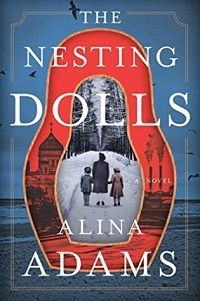 A century-spanning saga, Alina Adams' The Nesting Dolls traces the story of women in a Jewish family from 1930s Odesa across the Atlantic to Brighton Beach, New York, in the 21st century, incorporating themes of loyalty, hope, and the aftermath of painful choices. The author herself comes from Odesa. [see on Goodreads]
A century-spanning saga, Alina Adams' The Nesting Dolls traces the story of women in a Jewish family from 1930s Odesa across the Atlantic to Brighton Beach, New York, in the 21st century, incorporating themes of loyalty, hope, and the aftermath of painful choices. The author herself comes from Odesa. [see on Goodreads]

A young doctor who is going blind, Zinaida Lintvaryova, befriends a young man from Moscow, Anton Chekhov, when his family rents a dacha on her estate in eastern Ukraine (based on real-life history). This drama set in 1888 gets juxtaposed against a modern woman reading Zinaida's diaries. [see on Goodreads]
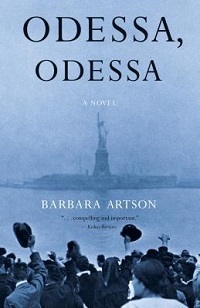
To escape anti-Semitic pogroms in their shtetl near Odessa, members of a Jewish family decide to emigrate to America, but assimilating into the culture of their new country isn't easy. A novel of persecution, generational differences, and resilience. [see on Goodreads]
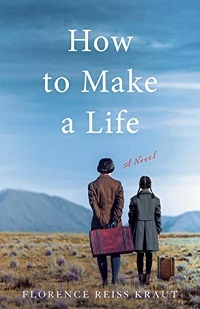
A young Jewish mother hopes to make a new start in America by emigrating in 1905 with her two surviving daughters after the rest of their family was killed in pogroms in Ukraine, but memories of their trauma remain; this saga spans four generations. [see on Goodreads]
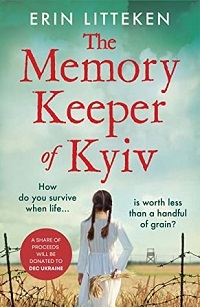 In her forthcoming debut, conceptualized well before the events of today, the author dramatizes the terrible events of the Holodomor of the 1930s, the man-made famine instituted by Stalin in which millions of Ukrainians died. The story is told from the viewpoint of a 16-year-old girl as she comes of age during this horrible time, and that of her granddaughter 70 years later. Out in May. [see on Goodreads]
In her forthcoming debut, conceptualized well before the events of today, the author dramatizes the terrible events of the Holodomor of the 1930s, the man-made famine instituted by Stalin in which millions of Ukrainians died. The story is told from the viewpoint of a 16-year-old girl as she comes of age during this horrible time, and that of her granddaughter 70 years later. Out in May. [see on Goodreads]
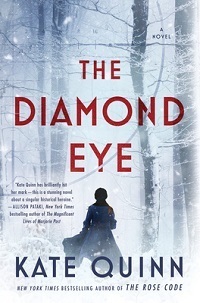 The heroine of Kate Quinn's latest historical thriller is Lyudmila "Mila" Pavlichenko, a Ukrainian library researcher who trains in marksmanship and becomes history's most accomplished female sniper, using her sharp-eyed skills as part of the Soviet army against the Nazis during WWII. There are echoes of today in seeing Ukrainians' indefatigable fight to defend their homeland. Based on a true story. This novel is published next week. [see on Goodreads]
The heroine of Kate Quinn's latest historical thriller is Lyudmila "Mila" Pavlichenko, a Ukrainian library researcher who trains in marksmanship and becomes history's most accomplished female sniper, using her sharp-eyed skills as part of the Soviet army against the Nazis during WWII. There are echoes of today in seeing Ukrainians' indefatigable fight to defend their homeland. Based on a true story. This novel is published next week. [see on Goodreads]
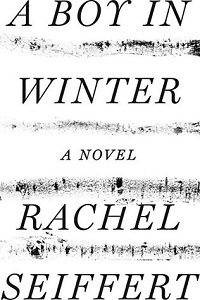
Seiffert, whose novel The Dark Room was shortlisted for the Booker Prize, has written a wrenching Holocaust novel about a diverse cast of characters in WWII-era Ukraine, as Nazi soldiers invade a small town. [see on Goodreads]
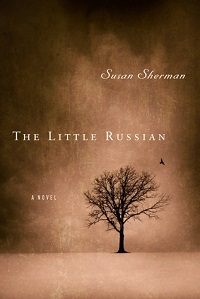
Susan Sherman's novel The Little Russian takes its title from an older (and imperialist) nickname for Ukraine which was in use at the time the story takes place, the turn of the 20th century. She based her main character on her grandmother, a young Jewish woman who struggles to keep herself and her family alive in a time of political turmoil. Read the guest post she wrote for my site back in 2012. [see on Goodreads]
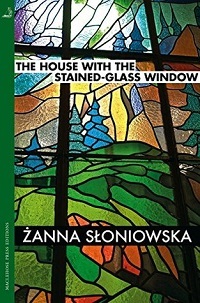 This slim literary novel opens in 1989, as an opera singer is murdered in the streets of Lviv while fighting for Ukrainian independence from the Soviets. The narrator, her daughter, takes readers on a journey encompassing the history of her maternal ancestors and of her beloved, politically troubled city. Translated by Antonia Lloyd Jones. [see on Goodreads]
This slim literary novel opens in 1989, as an opera singer is murdered in the streets of Lviv while fighting for Ukrainian independence from the Soviets. The narrator, her daughter, takes readers on a journey encompassing the history of her maternal ancestors and of her beloved, politically troubled city. Translated by Antonia Lloyd Jones. [see on Goodreads]
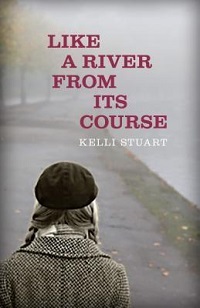 The publisher's blurb for this emotional historical novel says the author based her story on intensive research and interviews with Ukrainian WWII survivors. Told from four individuals' viewpoints during the Nazi invasion of the Soviet Union and the bombing of Kyiv, it reveals not only the darkness and cruelty of the time but also people's resiliency and hope. [see on Goodreads]
The publisher's blurb for this emotional historical novel says the author based her story on intensive research and interviews with Ukrainian WWII survivors. Told from four individuals' viewpoints during the Nazi invasion of the Soviet Union and the bombing of Kyiv, it reveals not only the darkness and cruelty of the time but also people's resiliency and hope. [see on Goodreads]
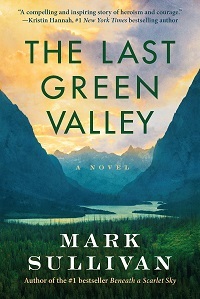
Mark Sullivan's The Last Green Valley, also a novel of Ukraine during WWII, is inspired by the true story of a family of German heritage, farmers in the Ukrainian countryside, forced into a dangerous, life-altering decision in 1944, as Stalin's Red Army approaches their home. [see on Goodreads]
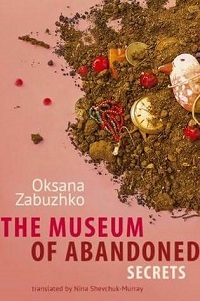
From Ukrainian novelist Oksana Zabuzhko comes a complex, 700-page epic covering six decades in Ukraine, beginning in the pre-WWII years and focusing on three women. They including a brave member of the Ukrainian Insurgent Army killed by Stalin's forces in 1947 and a journalist researching her life years later. Translated by Nina Shevchuk-Murray. [See on Goodreads]
Country borders have changed significantly over the last century and a half, which has made research a challenge. At different times, the lands from which they hailed were part of the Austro-Hungarian Empire, Poland, or the Russian Empire. It was interesting to come across my great-grandfather's naturalization record in which he renounced allegiance to Nicholas II, Emperor of all the Russias!
The following historical novels, set primarily set more than 50 years in the past, aim to illustrate the lives and experiences of earlier generations of people living within the borders of contemporary Ukraine. You'll note a frequent thread in these works is the fight against persecution and tyranny. Please feel free to recommend additional titles in the comments.
 A century-spanning saga, Alina Adams' The Nesting Dolls traces the story of women in a Jewish family from 1930s Odesa across the Atlantic to Brighton Beach, New York, in the 21st century, incorporating themes of loyalty, hope, and the aftermath of painful choices. The author herself comes from Odesa. [see on Goodreads]
A century-spanning saga, Alina Adams' The Nesting Dolls traces the story of women in a Jewish family from 1930s Odesa across the Atlantic to Brighton Beach, New York, in the 21st century, incorporating themes of loyalty, hope, and the aftermath of painful choices. The author herself comes from Odesa. [see on Goodreads]
A young doctor who is going blind, Zinaida Lintvaryova, befriends a young man from Moscow, Anton Chekhov, when his family rents a dacha on her estate in eastern Ukraine (based on real-life history). This drama set in 1888 gets juxtaposed against a modern woman reading Zinaida's diaries. [see on Goodreads]

To escape anti-Semitic pogroms in their shtetl near Odessa, members of a Jewish family decide to emigrate to America, but assimilating into the culture of their new country isn't easy. A novel of persecution, generational differences, and resilience. [see on Goodreads]

A young Jewish mother hopes to make a new start in America by emigrating in 1905 with her two surviving daughters after the rest of their family was killed in pogroms in Ukraine, but memories of their trauma remain; this saga spans four generations. [see on Goodreads]
 In her forthcoming debut, conceptualized well before the events of today, the author dramatizes the terrible events of the Holodomor of the 1930s, the man-made famine instituted by Stalin in which millions of Ukrainians died. The story is told from the viewpoint of a 16-year-old girl as she comes of age during this horrible time, and that of her granddaughter 70 years later. Out in May. [see on Goodreads]
In her forthcoming debut, conceptualized well before the events of today, the author dramatizes the terrible events of the Holodomor of the 1930s, the man-made famine instituted by Stalin in which millions of Ukrainians died. The story is told from the viewpoint of a 16-year-old girl as she comes of age during this horrible time, and that of her granddaughter 70 years later. Out in May. [see on Goodreads] The heroine of Kate Quinn's latest historical thriller is Lyudmila "Mila" Pavlichenko, a Ukrainian library researcher who trains in marksmanship and becomes history's most accomplished female sniper, using her sharp-eyed skills as part of the Soviet army against the Nazis during WWII. There are echoes of today in seeing Ukrainians' indefatigable fight to defend their homeland. Based on a true story. This novel is published next week. [see on Goodreads]
The heroine of Kate Quinn's latest historical thriller is Lyudmila "Mila" Pavlichenko, a Ukrainian library researcher who trains in marksmanship and becomes history's most accomplished female sniper, using her sharp-eyed skills as part of the Soviet army against the Nazis during WWII. There are echoes of today in seeing Ukrainians' indefatigable fight to defend their homeland. Based on a true story. This novel is published next week. [see on Goodreads]
Seiffert, whose novel The Dark Room was shortlisted for the Booker Prize, has written a wrenching Holocaust novel about a diverse cast of characters in WWII-era Ukraine, as Nazi soldiers invade a small town. [see on Goodreads]

Susan Sherman's novel The Little Russian takes its title from an older (and imperialist) nickname for Ukraine which was in use at the time the story takes place, the turn of the 20th century. She based her main character on her grandmother, a young Jewish woman who struggles to keep herself and her family alive in a time of political turmoil. Read the guest post she wrote for my site back in 2012. [see on Goodreads]
 This slim literary novel opens in 1989, as an opera singer is murdered in the streets of Lviv while fighting for Ukrainian independence from the Soviets. The narrator, her daughter, takes readers on a journey encompassing the history of her maternal ancestors and of her beloved, politically troubled city. Translated by Antonia Lloyd Jones. [see on Goodreads]
This slim literary novel opens in 1989, as an opera singer is murdered in the streets of Lviv while fighting for Ukrainian independence from the Soviets. The narrator, her daughter, takes readers on a journey encompassing the history of her maternal ancestors and of her beloved, politically troubled city. Translated by Antonia Lloyd Jones. [see on Goodreads] The publisher's blurb for this emotional historical novel says the author based her story on intensive research and interviews with Ukrainian WWII survivors. Told from four individuals' viewpoints during the Nazi invasion of the Soviet Union and the bombing of Kyiv, it reveals not only the darkness and cruelty of the time but also people's resiliency and hope. [see on Goodreads]
The publisher's blurb for this emotional historical novel says the author based her story on intensive research and interviews with Ukrainian WWII survivors. Told from four individuals' viewpoints during the Nazi invasion of the Soviet Union and the bombing of Kyiv, it reveals not only the darkness and cruelty of the time but also people's resiliency and hope. [see on Goodreads]
Mark Sullivan's The Last Green Valley, also a novel of Ukraine during WWII, is inspired by the true story of a family of German heritage, farmers in the Ukrainian countryside, forced into a dangerous, life-altering decision in 1944, as Stalin's Red Army approaches their home. [see on Goodreads]

From Ukrainian novelist Oksana Zabuzhko comes a complex, 700-page epic covering six decades in Ukraine, beginning in the pre-WWII years and focusing on three women. They including a brave member of the Ukrainian Insurgent Army killed by Stalin's forces in 1947 and a journalist researching her life years later. Translated by Nina Shevchuk-Murray. [See on Goodreads]
Published on March 22, 2022 09:30
March 15, 2022
Lorena Hughes' The Spanish Daughter takes readers to vibrant 1920s coastal Ecuador
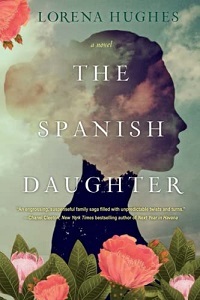 Lorena Hughes’ second novel drops a murder mystery into a simmering tale of sibling rivalry, gender-bending impersonation, and chocolate, and the result is scrumptiously readable. As in her debut, The Sisters of Alameda Street (2017), The Spanish Daughter vibrantly recreates the author’s native Ecuador.
Lorena Hughes’ second novel drops a murder mystery into a simmering tale of sibling rivalry, gender-bending impersonation, and chocolate, and the result is scrumptiously readable. As in her debut, The Sisters of Alameda Street (2017), The Spanish Daughter vibrantly recreates the author’s native Ecuador. In 1920, the coastal city of Vinces is known for its European architecture and cacao production. An experienced chocolatier, María Purificación de Lafont y Toledo, called Puri, sails from Seville to claim an inheritance from her late father, cacao plantation owner Don Armand, who had abandoned her and her mother decades earlier. She discovers, to her shock, that someone wants her dead.
Aboard the ship to Ecuador, Puri’s husband Cristóbal is killed in an attack meant for her, and so Puri disguises herself as Cristóbal—lowering her voice, wearing his clothes, and donning false facial hair—to determine who wanted to steal her rightful legacy. Puri surprisingly learns that her father had a second family, but while her half-siblings are resentful over Don Armand’s will, they treat “Don Cristóbal” with respect and don’t seem especially murderous.
This family has secrets aplenty, though, and Puri must sneak around the hacienda without letting her disguise slip, a challenge when she’s not comfortable riding horses, and when the dashing plantation administrator takes her drinking and to visit prostitutes (these scenes and Puri’s reactions are hilarious). The story explores gender roles with thought-provoking understanding. The plot feels initially jumpy when the viewpoint switches to Puri’s half-sisters at different times in the past, but these segments serve to illustrate family dynamics while adding to the puzzle.
It almost seems impossible there could be a satisfying ending to this complex state of affairs, but there is, very much so, and the novel’s atmosphere is as rich as Puri’s chocolate recipes.
The Spanish Daughter was published last December by Kensington, and I reviewed it from NetGalley for the Historical Novels Review. I'd also reviewed The Sisters of Alameda Street when it came out and look forward to more works by this author.
Published on March 15, 2022 13:04
March 9, 2022
Discussing Bryn Turnbull's The Last Grand Duchess on the Off the Shelf videocast
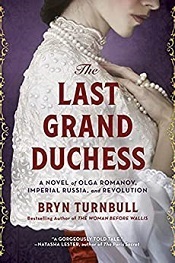 I had a great time yesterday evening chatting about Bryn Turnbull's The Last Grand Duchess on Off the Shelf, a videocast hosted by authors Barb Wallace, Renee Ryan, and Donna Alward. Thanks to Barb, Renee, and Donna for inviting me as a guest and for letting me choose this episode's discussion book!
I had a great time yesterday evening chatting about Bryn Turnbull's The Last Grand Duchess on Off the Shelf, a videocast hosted by authors Barb Wallace, Renee Ryan, and Donna Alward. Thanks to Barb, Renee, and Donna for inviting me as a guest and for letting me choose this episode's discussion book!The Last Grand Duchess, subtitled "A Novel of Olga Romanov, Imperial Russia, and Revolution," looks at the last years of the Russian imperial family through the eyes of the Tsar and Tsarina's oldest daughter, Olga. As she comes of age, her eyes begin opening to the reality of the political situation around her, and her parents' role in creating it.
It's a dual-timeline novel that contrasts an era of opulent balls, tea parties, and the advent of WWI with scenes taking place several years later, beginning in 1917, after Nicholas II's forced abdication of the throne and the family's subsequent captivity and exile. Everyone had opinions on the split-timeline aspect, which made for a good discussion.
The program's just under an hour. It's embedded below and also available by visiting YouTube.
Off the Shelf is an offshoot of the Step into the Story Facebook group (which I'm part of), and the show has regular episodes with discussions about intriguing historical novels and aspects of the writing process. I'm glad to have been a part of it!
Published on March 09, 2022 04:00
March 5, 2022
Kerri Maher's The Paris Bookseller celebrates Sylvia Beach, publisher and bookshop owner in 1920s literary Paris
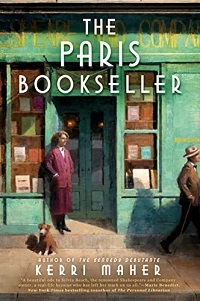 In a novel exuberant, bittersweet, and reflective by turns, Maher explores the life of Sylvia Beach, doyenne of the American expat literary scene during the interwar years as proprietress of the English-language bookstore Shakespeare and Company. Unlike many writers whose work she championed, Beach may not be a household name, but the story gives her her due, recognizing that it takes a special talent to create a space where art can thrive.
In a novel exuberant, bittersweet, and reflective by turns, Maher explores the life of Sylvia Beach, doyenne of the American expat literary scene during the interwar years as proprietress of the English-language bookstore Shakespeare and Company. Unlike many writers whose work she championed, Beach may not be a household name, but the story gives her her due, recognizing that it takes a special talent to create a space where art can thrive. In 1919, Sylvia arrives in the French capital, content to breathe the air of this “most rare and wonderful of places.” She finds a spiritual home at the bookshop of Adrienne Monnier, a young raven-haired Parisian to whom she’s attracted. Adrienne is already attached, but she and her partner welcome Sylvia to their literary life.
An admirer of the unabashed honesty of Kate Chopin and James Joyce, Sylvia discovers her true métier lies in supporting the power of art to “be new, to make change, to alter minds.” Establishing her own bookstore and lending library sets her on this path, making her store a magnet for the literati.
The atmosphere feels effervescent with creativity, though after obstacles to Sylvia’s dreams fall away (she and Adrienne become a couple at last), the story lacks conflict. Momentum increases once Sylvia takes up the challenge of publishing the manuscript of Joyce’s Ulysses herself, since the work is deemed obscene in the United States.
The ways she and her friends circumvent would-be censors to get the book into American readers’ hands are brilliant. Joyce may be a genius, but he has definite character flaws, and the story offers a deep look at their complicated relationship and Sylvia’s own emotions as she questions how much she should give of herself in indulging him. In the end, readers will emerge with sincere appreciation for the artistic spirit and courage of a remarkable woman.
The Paris Bookseller was published by Berkley last month, and I reviewed it from NetGalley for the Historical Novels Review. Historical fiction about librarians and booksellers has become popular; unsurprisingly, readers love reading about other people who appreciate books and literature. Read more about the story behind the book in Trish MacEnulty's interview with the author for the same HNR issue.
Published on March 05, 2022 06:10
February 28, 2022
Louisa Morgan's The Great Witch of Brittany tells a tale of women's magic in rural 18th-century France
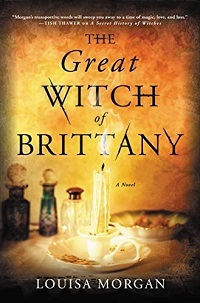 Morgan wrote this book in response to reader requests for more about Ursule Orchière, the elderly matriarch from A Secret History of Witches. At the beginning of that novel, Grandmère Ursule used a tremendous feat of magic to protect her descendants from witch-hunters and point their way to a safer home across the sea.
Morgan wrote this book in response to reader requests for more about Ursule Orchière, the elderly matriarch from A Secret History of Witches. At the beginning of that novel, Grandmère Ursule used a tremendous feat of magic to protect her descendants from witch-hunters and point their way to a safer home across the sea. The Great Witch of Brittany is an expansive saga that should satisfy her fans’ expectations for a prequel and then some. Like the menhirs on the field where the Orchières rest their caravan, it also stands proudly on its own.
In 1763, in a Romani settlement outside Carnac-Ville in northwest France, Ursule is a plain, dark-eyed thirteen-year-old who assists her fortune-teller mother, Agnes. Although the Orchière women have a heritage of witchcraft, none among their large clan can work magic until Ursule’s latent abilities awaken during puberty. When Ursule unknowingly blurts out a hidden truth about a client, the situation turns dangerous, forcing Ursule to flee and leave the travelers’ life behind.
We know that Ursule will become a mother and grandmother, but not how that came about. Suffice it to say that in ensuring the continuation of her line, Ursule must weigh whether to use her knowledge of spells and tonics toward this purpose. Unsurprisingly, she also faces prejudice due to her skin color throughout her long life.
Aside from repercussions from the French Revolution, historical events don’t intrude much, although the scenes of pagan festivals and daily life in the pre-industrial Breton countryside are skillfully illustrated. The book spans nearly sixty years, and Ursule and her family comes to feel like old friends as she moves from maiden to mother to crone with guidance from her ancient grimoire, scrying stone, a raven familiar, and the voices of her predecessors. For fans of feminist historical fantasy, this tale of women’s stories, power, and mysteries will greatly appeal.
The Great Witch of Brittany was published by RedHook this month, and I'd reviewed it from NetGalley for the Historical Novels Review. I actually enjoyed it more than the original book, which I'd reviewed in 2017.
Published on February 28, 2022 05:00
February 19, 2022
Jane and the Year Without a Summer by Stephanie Barron takes Jane Austen to the spas of Cheltenham in 1816
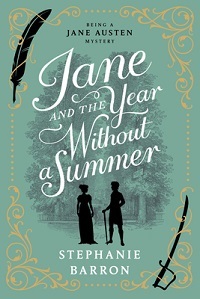 In May 1816, Jane Austen and her beloved sister, Cassandra, embark on a two-week stay in the fashionable English spa town of Cheltenham to take the waters and stroll about the streets. Sadly, Jane has been plagued by illness, with little appetite, and suffering from backaches, fatigue, and an odd sallow complexion. If she can manage to distract herself from her poor health and her brothers’ personal problems, maybe Jane will find time to work on her manuscript-in-progress, “The Elliots,” while she’s away.
In May 1816, Jane Austen and her beloved sister, Cassandra, embark on a two-week stay in the fashionable English spa town of Cheltenham to take the waters and stroll about the streets. Sadly, Jane has been plagued by illness, with little appetite, and suffering from backaches, fatigue, and an odd sallow complexion. If she can manage to distract herself from her poor health and her brothers’ personal problems, maybe Jane will find time to work on her manuscript-in-progress, “The Elliots,” while she’s away. She and Cassandra take lodgings at Mrs. Potter’s, a boarding house on the High Street whose other guests are an eccentric and motley bunch, including a beautiful invalid heiress with a waspish temper, the companion who attends her in her wheeled chair, a middle-aged brother-sister pair whose self-centeredness knows no bounds, a young woman who gives elocution lessons to actors, and more. Meanwhile, Jane has trouble setting aside thoughts of Mr. Raphael West, a handsome past admirer, and wonders why he hasn’t renewed their acquaintance.
In her fourteenth Jane Austen mystery, Stephanie Barron smoothly interweaves real events from Jane Austen’s life with a fictional crime scenario involving her fellow lodgers, at least one of whom has murder in mind. You may be excused for forgetting, early on, about the novel’s intended genre, since the plot ambles along nicely for a while without any deadly happenings.
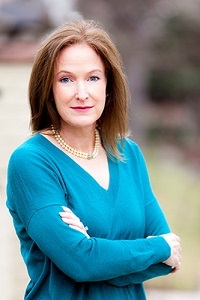 author Stephanie Barron
author Stephanie BarronJane and Cassandra sample the waters at the Pump House (which taste absolutely vile!), and her visit to a local physician gets her blood boiling, a reaction that women especially will identify with. The Austen sisters become curious about the mysterious “Beauty in the Bath Chair” and her reasons for being in Cheltenham. Make no mistake, though, this genteel mystery has teeth, and Jane, with her famously astute observations on human nature, is there to untangle it all.
The novel is written in the form of a period piece authored by Jane herself, complete with Regency-era diction, vocabulary, and spellings, plus historical footnotes contributed by the book’s “editor.” Through them, we’re told (or reminded, for those in the know) about the meaning of the title: following the eruption of Mt. Tambora in the Dutch East Indies the previous year, the weather across Europe in 1816 was unnaturally cold and dismal. Footnotes in historical fiction only work well in certain instances, and this is one of them.
Despite Jane’s literary brilliance (and deductive success, as imagined here), it’s impossible, while reading this story, to set aside the sorrowful fact that her life—and by implication, perhaps this series as well—is drawing to a close. The ending, while bittersweet, feels just right for the book, and for readers who haven’t sampled Jane’s previous adventures, there are thirteen others to anticipate.
Stephanie Barron's Jane and the Year Without a Summer is published by Soho Press this month (I reviewed it from a NetGalley copy for the author's blog tour).
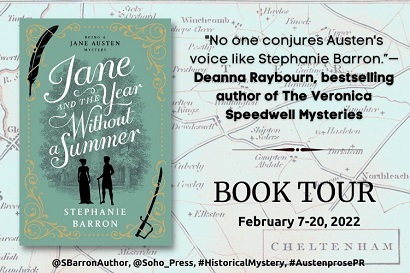
Published on February 19, 2022 04:30



